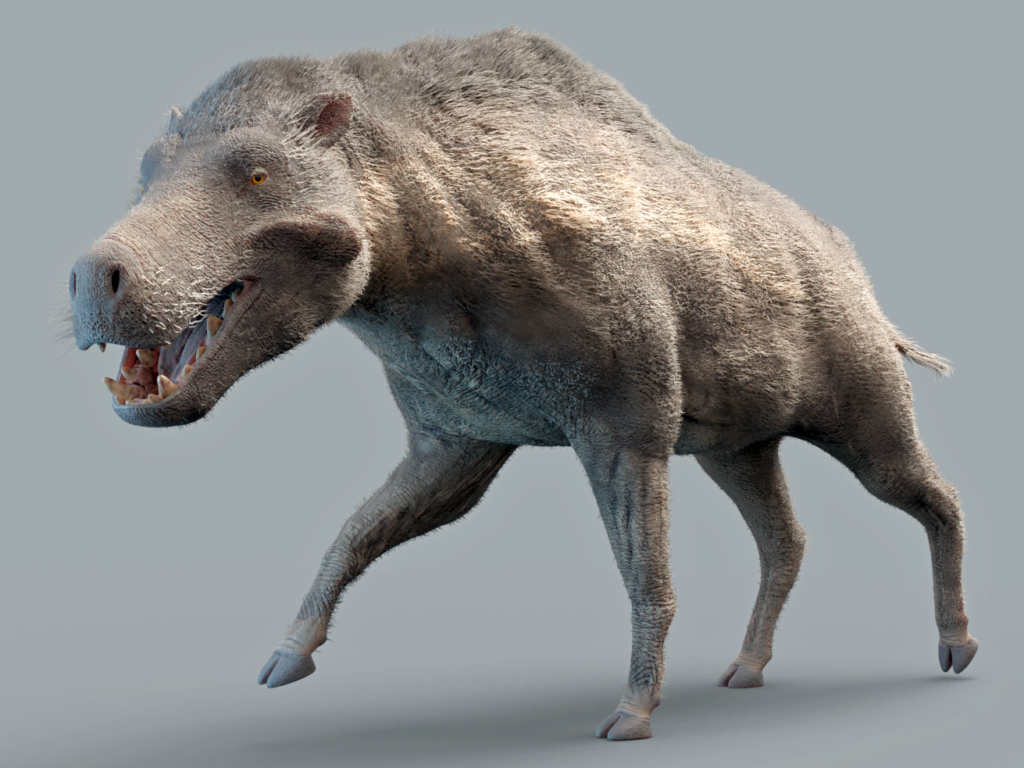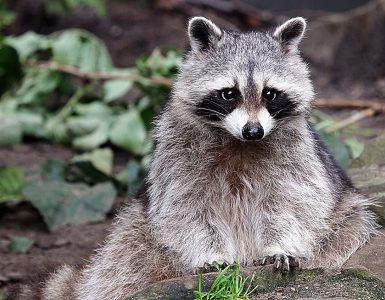About 20 to 40 million years ago, entelodonts—immense, snaggletoothed, pig-like beasts—trotted throughout Eurasia and North America. But despite their 3-foot jaws studded with an alarming number of triangular teeth, these barnyard nightmares apparently had a typically porcine diet.
New findings, published recently in the journal Palaeogeography, Palaeoclimatology, Palaeoecology, shed a light on feeding habits of these strange, extinct mammals and some of their closest relatives, revealing clues about the changing world they inhabited.
Researchers now understand that mammals like whales and hippopotamuses have a close evolutionary kinship. But the fossil record shows that these groups once shared the planet with multiple now-extinct related families, some of which were beyond weird. There were anthracotheres, which were like Dachshund hippos with stretched out, narrow heads. There were also those vaguely piggish entelodonts: buffalo-sized rage swine with wide, winged cheekbones, barreling along on unnervingly athletic legs.
“They have a very strange morphology. They’re like a combination of different animals,” said Florent Rivals, an evolutionary paleoecologist at the Catalan Institute of Human Paleoecology and Social Evolution in Spain, citing features of entelodont skulls and teeth that resembled those of both pigs and carnivorous mammals.
Entelodonts and anthracotheres aren’t well-understood, said Rivals, particularly in regards to their diet. Entelodonts seem to have a lot in common with omnivorous pigs, for example, but they’ve also been imagined as potential predators, prowling the woodlands and plains for vulnerable game like some kind of hooved grizzly. Other hypotheses suggested the hulking faux-hogs were among the biggest and baddest scavengers of their time, possibly even going full hyena and crushing bones. The idea that these little piggies had roast beef and whatever else they damn well pleased helped make nicknames like “terminator pig” or “hell pig” stick, and was even explored in a nature documentary series.
To help clarify what entelodonts and anthracotheres actually ate, Rivals and his colleagues examined the fossilized teeth of Anthracotherium and Entelodon that lived in southern France roughly 30 million years ago during the Oligocene epoch. The foods that animals eat leave microscopic pits and scratches on a tooth’s surface. These “microwear” patterns can help researchers tell what foods an animal ate when it was alive. Bones and seeds tend to leave pits, while grasses and foliage mostly wear scratches, explained Benjamin Burger, a paleontologist at Utah State University in Vernal not involved with this research.
The team compared the microwear patterns on the fossilized teeth with a database of patterns from other mammals with known diets, such as boars, bears, lions, hippos, and horses.
Anthracotherium, for instance, seemed to enjoy a diet of just about everything plant-based, having similarities to browsing, grazing, and fruit-eating mammals.
Read more at Gizmodo.com






